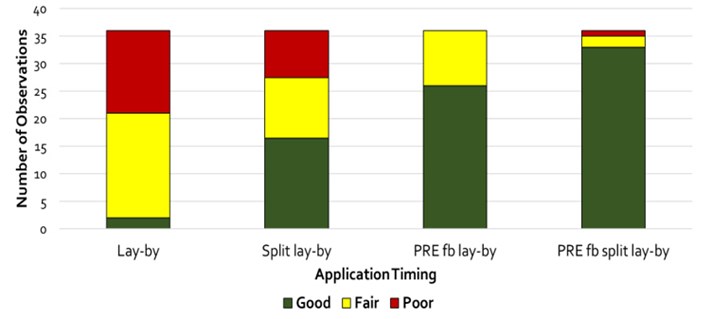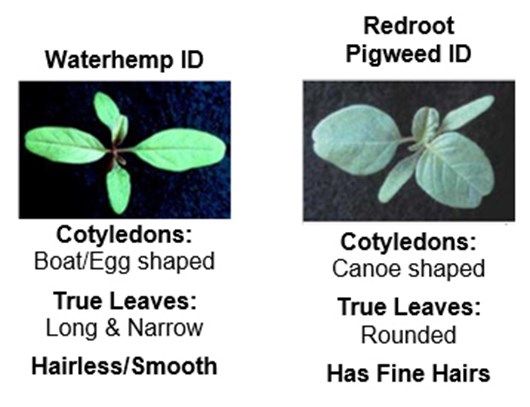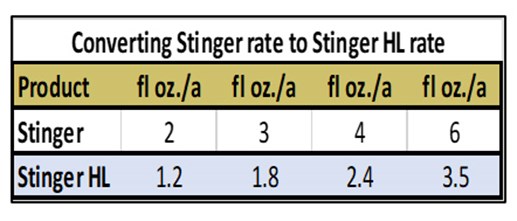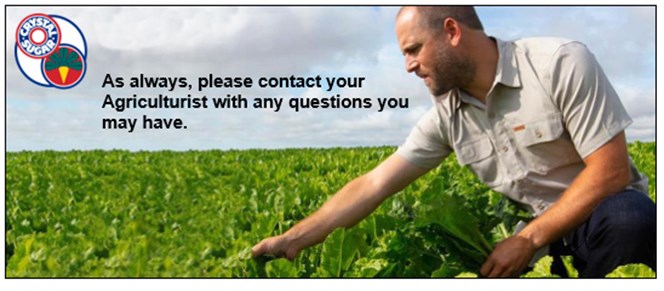623 - Proactive Weed Control 2022
The definition of proactive “creating or controlling a situation by causing something to happen rather than reacting to it after it’s happened”.
With resistant weeds in sugarbeets, growers need to be proactive as there are not many alternatives for control once they have emerged. Complete control of a situation never really happens but having and deploying a premeditated weed control program can increase your chances of success.
Our most problematic weeds can attest to this:
- Waterhemp and kochia both require soil applied herbicide programs for control.
- Common ragweed has become more difficult to control and requires a higher rate and timely application of clopyralid (Stinger/Stinger HL).
- Common lambsquarters control needs glyphosate activity to be maximized as much as possible by mixing with ammonium sulfate (AMS) and non-ionic surfactant (NIS).
This Ag Note will highlight these items and provide links to various quick sheets for more detailed information.
Glyphosate
As you are aware, glyphosate supply may be a concern. If you are not able to get the amount you need, you may have to prioritize which crops to focus its use on. In sugarbeets glyphosate is still a vital component of the weed control program. There are often more effective conventional herbicide options available in our rotational crops than there are in sugarbeets. Ration your glyphosate supply appropriately to make sure you have the amount necessary to cover your sugarbeet weed control needs.
Glyphosate Acid Equivalent
Not all glyphosate products are created equal, meaning they can have different quantities of glyphosate (lbs. acid equivalent/gallon) making them more or less concentrated. This should be noted as the corresponding rates of product needed is different for the various lbs. of acid equivalent levels. See Glyphosate Equivalent quick sheet link in box on page 2.
Roundup PowerMAX3® is a new glyphosate formulation from Bayer. It is slightly more concentrated than Roundup PowerMAX®. The below table compares Maximum Use Rates of the two with PowerMAX3® (4.8 lb acid equivalent (a.e.)) and PowerMAX® (4.5 lb. a.e.)

Quick Sheet: Glyphosate Acid Equivalent & Tips for Maximizing Weed Control
Maximize Glyphosate’s Effectiveness
- Spray small weeds.
- Dr. Peters studies have found when spraying small waterhemp <2”, he was able to control 76% of the resistant waterhemp population.
- Use the maximum allowable rate for the stage of sugarbeet growth.
- Improve control by adding a good quality nonionic surfactant (NIS)
- Fully loaded glyphosate formulation: use 0.25% v/v (unless prohibited on label)
- Partially loaded glyphosate formulation: use 0.25 - 0.50% v/v
- Non-loaded glyphosate formulation: 0.5 – 1.0% v/v
- Use 8.5 – 17 lbs. of AMS per 100 gallons of spray solution
- Use glyphosate mixtures with ethofumesate (4-6 fl oz./a) maximize waterhemp and kochia control.
- See Maximizing Weed Control link to the left for more information
Kochia
Acres affected with resistant kochia are increasing.
- Kochia emerges early, even before fields may be ready to be planted
- Tillage prior to planting can take care of early emergers
- Vertical tillage systems may not be sufficient
- a shovel-type implement may perform better at this task.
- Ethofumesate pre-emergence (PRE) or pre-plant incorporated (PPI) is the best treatment for kochia control
- Rate of 5 – 7.5 pts./acre
- A minimum rate of 5 pts./acre is required
- On emerged kochia
- Apply glyphosate when kochia is small (<3-inch)
- Adding ethofumesate post emergence (POST) at 4-6 oz./acre helps increase control.
Waterhemp
- Acres affected by waterhemp continue to increase
- Waterhemp emerges season long, so a layered soil-applied herbicide program has proven to be the best approach for its control.
- Use PRE/PPI soil applied herbicide followed by POST lay-by herbicide applications
- Many of you are tenured in this waterhemp control program while others are just starting to implement it.
Soil Applied Herbicide Program Waterhemp Effectiveness Comparison
The chart below is Dr. Peters’ work summarizing four soil-applied herbicide management systems over his years of research. The best results use a layered approach of a PPI/PRE followed by POST split Lay-by applications.

The Base Waterhemp Control Plan
- PRE/PPI applied soil applied herbicides: Dual Magnum; Ethofumesate
- POST applied Lay-by soil applied herbicides: Dual Magnum, Outlook, or Warrant
- See the links below for information on:
Even in last year’s drought, weed control was improved with the use of soil applied herbicides. They need rainfall at varying levels to be incorporated into the soil, but it is tough to forecast when rain will occur and time applications with rain. Soil applied herbicides at planting provide a level of insurance against early germinating weeds and in the event that rain to incorporate lay-by herbicides is not timely. Remember waterhemp will emerge throughout the growing season.
Identifying Waterhemp
Waterhemp stems can be either green or red in color or a bit of both. Its main distinguishing feature from pigweed is that waterhemp has smooth, hairless stems and more elongated true leaves.

Ultra Blazer
For the 2021 growing season, Ultra Blazer received a Section 18, emergency use, label. An application for a Section 18 label needs to be made for each crop year. The application for the 2022 growing season has been submitted and we are awaiting its approval.
Upon approval for 2022, Ultra Blazer applications are considered a treatment for “escaped weeds” and should not be used as a planned part of the waterhemp control program. The layered soil applied herbicide program is the plan to follow. Further information regarding Ultra Blazer in 2022 will be provided in a future Ag Note following a 2022 Section 18 label approval.
Common Ragweed
Common ragweed has become more difficult to control. Stinger (clopyralid) is the only herbicide available for use in sugarbeet to control common ragweed. It is recommended to use Stinger @ 3 oz./acre or Stinger HL @ 1.8 oz./acre to provide greater assurance of control.
Stinger formulations
Corteva came out with a new Stinger formulation last year, called Stinger HL. This is a more concentrated formulation than Stinger, resulting in Stinger HL being used at lower rates to provide the same amount of active ingredient/acre.
- Stinger HL is dyed sky-blue to help distinguish it from Stinger.
- Both Stinger & Stinger HL are labeled to be used on sugarbeets from the cotyledon to 8 leaf growth stage.
- Target common ragweed that has its 1st true leaves and is less than 3 inches tall.
Common Ragweed Clopyralid Rate:
Stinger: 3 oz./acre followed by 3 oz./acre
Or
Stinger HL @ 1.8 oz./acre followed by 1.8 oz./acre

Common Lambsquarters
Common lambsquarters can be a very tough weed to control because of its biology (leaf size, orientation, and waxes on the plant) enabling it to “repel” herbicides and not allow them to effectively get into the plant tissue. It is best to maximize glyphosate’s effectiveness as stated on page 2 and add in additional nonionic surfactant (NIS) to help in overcoming that barrier.
Links to 2021 Weed Resistance Maps
For more detailed Sugarbeet Weed Control Information
- Resistance Management Weed Control
- Other Crop Resistant Management Weed Control Options
- ACSC Ag Gold Standards Weed Control Page

